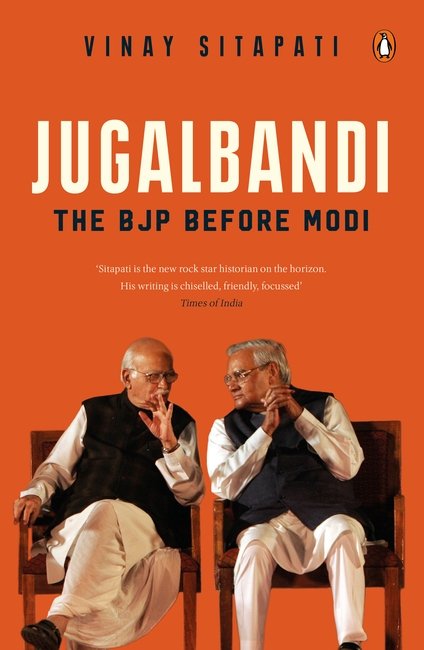
Reading Jugalbandi: The BJP Before Modi is much like binge-watching a captivating Netflix TV series, you get so absorbed reading it that you only put the book down once you have finished it. The book is undoubtedly a significant contribution to Indian history writing and tells the story of India with Atal Bihari Vajpayee and Lal Krishna Advani as central characters. Yet one gets the impression that the book is an attempt to understand and explain the phenomenon of Narendra Modi and Amit Shah using the lens of Atal and Advani.
The story starts in 1924. India will soon be celebrating seventy-five years of its independence and the book explores an important spectrum of the freedom struggle which was perhaps deliberately given lesser traction. Jugalbandi is an important contribution to understanding the phenomenon that Bharatiya Janata Party is today and will perhaps allay unsubstantiated speculations and propaganda that we see around the party. The book is rich with anecdotes and quotes, a hundred-page long list of ‘Notes’ gives a view into how the gripping story of the two stalwarts of Indian politics has been perceived and understood. The sequential setting of the timelines and the titles in the book make it easy to comprehend and relate to contemporary incidents of Indian history. The book also leaves one richer by exposing the readers to characters like Shyama Prasad Mukherjee, Deendayal Upadhyay, Nanaji Deshmukh, Balraj Madhok and others and the important role they played in building the party as an alternative to Congress and its dominance of Indian politics.
Vinay Sitapati wrote for the Open Magazine, ‘I had by then finished my PhD at Princeton University in political science and had read most of the books, articles and screeds on Hindu nationalism. This Western training had provided me with a lens of a certain tint to view the synchronised exercises that were being performed in the video.‘ While reading the book and referring to the notes I could see the impact of this lens which Vinay Sitapati has mentioned in his article. The author in the same article concludes ‘Hindu nationalists may be majoritarian, but they are no fascists. They are birthed by elections, the first ingredient of any definition of democracy.‘ What perhaps distinguishes this book from other books written on the subject are the two hundred interviews that the author conducted in his attempt to understand the Bharatiya Janata Party and the Rashtriya Swayamsewak Sangh.
There are claims in the book which require deeper scrutiny, for example, the one about Deendayal Upadhyay’s Integral Humanism being entirely inspired by the Catholic thinker Jacques Maritain. The influence of indigenous thought and spiritual leaders like Vishnu Bawa Brahmachari and his works on Deendayal Upadhyay need more research. The author also claims that Narendra Modi learned his politics while countering the KHAM alliance built by the Congress in Gujarat but doesn’t attribute the influence of emergency years on him, where Prime Minister Modi played an active role in the underground movement.
The other blind spot of the book might be the absence of any reference or quote from the central character, i.e. Lal Krishna Advani or their immediate families. A perspective from one of the central characters would have made the content richer. Also, certain aspects, like the letter of Gujarat MLA Amit Shah to Prime Minister Atal Bihari Vajpayee on India’s nuclear tests, needed more than just a reference to a ‘reputed journalist’. In a chapter titled ‘Nehru’s Shadow’ a quote is attributed to a poet claiming Atal ji’s poetry wasn’t as good as his speech. The reference to this quote starts by ‘for obvious reasons, poet did not wish his name to be quoted‘. As a reader I have been unable to unearth the obvious reasons.
Vinay Sitapati’s book has opened an avenue for audiences across the world to get a peek into the lives of the two of the most eminent leaders of the current ruling dispensation who have led the political and ideological zeitgeist in India. This should provide a fresh outlook to those interested in neutrally looking at the phenomenon of the RSS and BJP and their role in the making of Indian history, a topic which has been long ignored and understudied.






Add comment